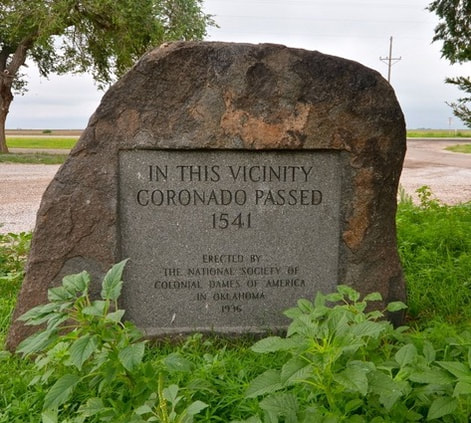The Hispanic-American History Timeline
1540-42 Coronado Explores the Southwest, Cardenas Discovers the Grand Canyon
|
Spanish explorer Francisco Vasquez de Coronado leads an expedition of more than 1,000 settlers and slaves through territories covering present-day Arizona, New Mexico, Texas, Oklahoma, and Kansas. And some of his explorers discover the Grand Canyon!
Following directives from the Spanish Crown, Coronado sets out to spread the word of God, to expand Spain’s territory in the New World and find the mythical Seven Cities of Cibola, believe to be rich with gold. The prospect of immense wealth makes Coronado not only accept the assignment but, along with other investors, he invests his rich wife’s money in the expedition. The Coronado caravan, including 340 Spanish soldiers, 700 Indian allies and some slaves, starts in New Spain (present day-Mexico) and travels with supplies, tools, and thousands of livestock. When the large group of settlers begins to slow down the expedition, Coronado decides to split them into smaller groups, sending them in different directions to explore more territory. Five months into the expedition, when Coronado and his followers reach Cibola in present-day New Mexico, they fail to find the riches they were expecting. What they find are Native American pueblos built of stones and mud – and Zuni Indians who know nothing about gold. But Coronado isn’t giving up. While he gives up his search for Cibola, he hooks up with a Native American who claims to be able to lead him to another land of richness, known as Quivira. Following this new guide, whom the Spanish call “The Turk,” Coronado travels much further north, leading a group about 30 settlers through portions of today's Texas, Oklahoma, and Kansas. But when they finally reach Quivira, in the plains of Central Kansas in 1541, they discover the grass-hut villages of the Quivira Indians, but there is no gold to be found. Feeling deceived and mislead by their Indian guide, the Spanish settlers kill The Turk and Coronado decides to return to New Mexico to rejoin the main expedition. However, while Coronado heads northeast toward Kansas, other portions of his caravan explore in other directions. One of those smaller groups, lead by Garcia Lopez de Cardenas, is searching for the Colorado River and discovers the Grand Canyon! The river has been discovered by other Spanish explorers about a year earlier, but they are the first Europeans to set their eyes on that amazing Grand Canyon, in present-day Arizona. Back in New Mexico in 1542 Coronado is thrown off his horse and sustains a head injury, leaving him no other option but to return to present-day Mexico, without the fortune he sought for himself, his investors and for Spain. Although he resumes his post as governor of Nueva Galicia, on Mexico’s western coast, until 1544, charges of cruelty against the Indians and mismanagement of the expedition are filed against both Coronado and Cardenas, his field master, especially for their role in the bloody “Tiguex War,” against the natives of New Mexico. Yet, although numerous natives lost their lives as a result of the Coronado expedition, thanks to Coronado’s political connections, only Cardenas is convicted, back in Spain, and sentenced to seven years in prison. Coronado remains in Mexico until his death of an infectious disease in 1554. He is buried under the altar of the Church of Santo Domingo in Mexico City. The Coronado’s expedition discovers no gold and converts no new Catholics, but it lays claim to vast new territories for Spain. The expedition covers about 4,000 miles of new territory, fertile ground for European farming and important landmarks such as the Grand Canyon. In the 16 century, Coronado’s expedition is considered a failure. But now, while some are still disgusted by its cruelty against Native Americans, to many others, his expedition is seen as a great accomplishment. In 1952, the Coronado National Memorial is established in southern Arizona as a way for people to see the impact that the Coronado expedition had on the southwestern United States. By Tiffany Guzman, Lehman College |
|














